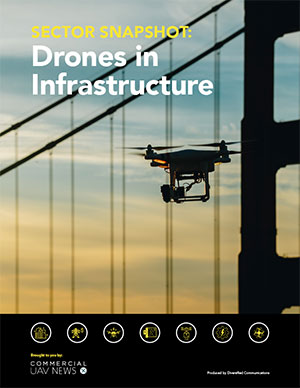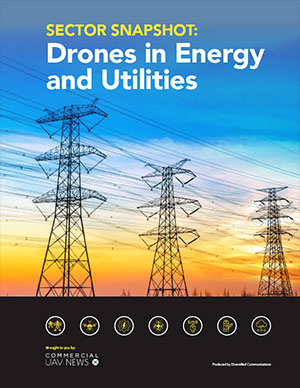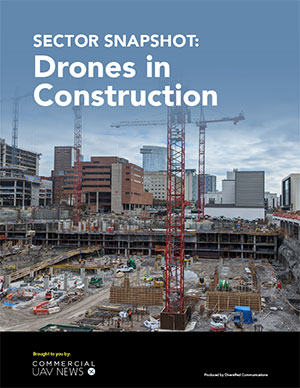At this year’s Commercial UAV Expo, the conversations and innovations on display underscored just how far the industry has come. From long-anticipated regulatory progress around BVLOS operations to the rise of autonomous systems and growing investments in education and AI, it’s clear the drone industry is no longer in its infancy. It’s learning to walk confidently into its next phase of growth.
Entering the “Walk” Phase of “Crawl, Walk, Run”
After attending my fifth Commercial UAV Expo, it is impossible to ignore how far the industry has come in the past years. Five years ago, it seemed that the drone industry was still getting its footing by dealing with challenges such as figuring out what customers’ biggest needs were, deciding what kind of drone can do a specific job, and how to do that job with a short flight time. When I first entered the industry, many were saying it was in the “crawl” phase of “crawl, walk, run.” After listening to conversations across the 11th edition of the show and seeing what great advancements have been in made in just a few years, it’s safe to say we are on the next step of “walk” for the industry.
Perhaps the biggest indicator of this shift is the latest Notice of Proposed Rule Making for Part 108 BVLOS operations. The idea of flying BVLOS was previously reserved for those few who had the waiver to do so. Recognizing that there are so many applications where BVLOS flights are needed, the FAA has finally reached the point of trying to standardize this process for the future. With the news of this NPRM coming out a month before CUAV Expo, there were many sessions and conversations around this proposed rule and what it could mean for the future of the drone industry.
Another sign of growth in BVLOS operations is the rising adoption of docked drone, or drone-in-a-box (DiB), systems. This year’s conference featured numerous use cases for DiB in infrastructure security, first response, and inspections, enabling flights that operate miles from the dock without the need for an on-site observer. With the removal of a person involved, this shows that technology has advanced enough that with the right programming, we trust it to go out and do the job without issue.
The Need for Cross-Industry Collaboration
This year’s edition of CUAV Expo featured more sessions focused on training and education, a direct correlation to the growth of the industry. Between the Next Generation roundtable, the University roundtable, and all the content from Pilot Institute, it’s clear that strong efforts are underway to position drone operations as a viable career path for younger generations. In the last five years, there has been an increase in high school- and college-level curriculum related to drones, sparking interests of students across age and background into the world of drones. While these are great strides to reinforce the workforce, academia needs better relationships with drone companies to be successful.
On the theme of cross industry collaboration, educators voiced their need for partnerships between their schools and drone companies and service providers to understand how they should be preparing their students. Getting critical information around what kind of technical skills they will need and how to train them to be prepared for a constantly changing industry will help them in the long run. Whether you’re preparing newcomers for the workforce or already a seasoned professional, one theme was clear: flexibility is essential. With technology evolving daily, regulations shifting, and new efficiencies emerging, this industry never stands still. Supporting it requires a workforce that is both resilient and adaptable.
Openness to Adopt AI
While the industry may be growing into its new life stage with such high adoption rates and proven ROI, operators are hoping to see the same trend with the use of AI in drone operations. Heard across multiple sessions at CUAV Expo, including the keynote on collaboration, the use cases for AI-driven platforms for data management and analysis are huge driver for efficiency. Demand for drone–led projects is growing, meaning the workforce needs to grow with it. While the next generation of pilots and projects managers are getting educated, using AI as a force multiplier can help keep daily operations running smoothly. Instead of sitting at a computer for hours on end, uploading data, organizing it, analyzing it, and reporting on its findings, AI presents the opportunity to take care of that. Now, a team can use that time saved for other operations.
Getting comfortable with using AI-run platforms today will only benefit you and your organization in the future as the adoption of AI becomes widespread. As stated by Nitin Gupta of Flytbase during the aforementioned keynote,“[AI] is becoming a new operating system for humanity.”
One point about increasing the use of AI in daily operations rang true throughout conversations at the event. AI is not here to replace you; it’s a tool to help you and your team work smarter, faster, and cheaper. Having an AI platform sort through inspection data, compile results, and analyze it accurately gives the team more time to fly and connect with customers to understand their needs.















Comments